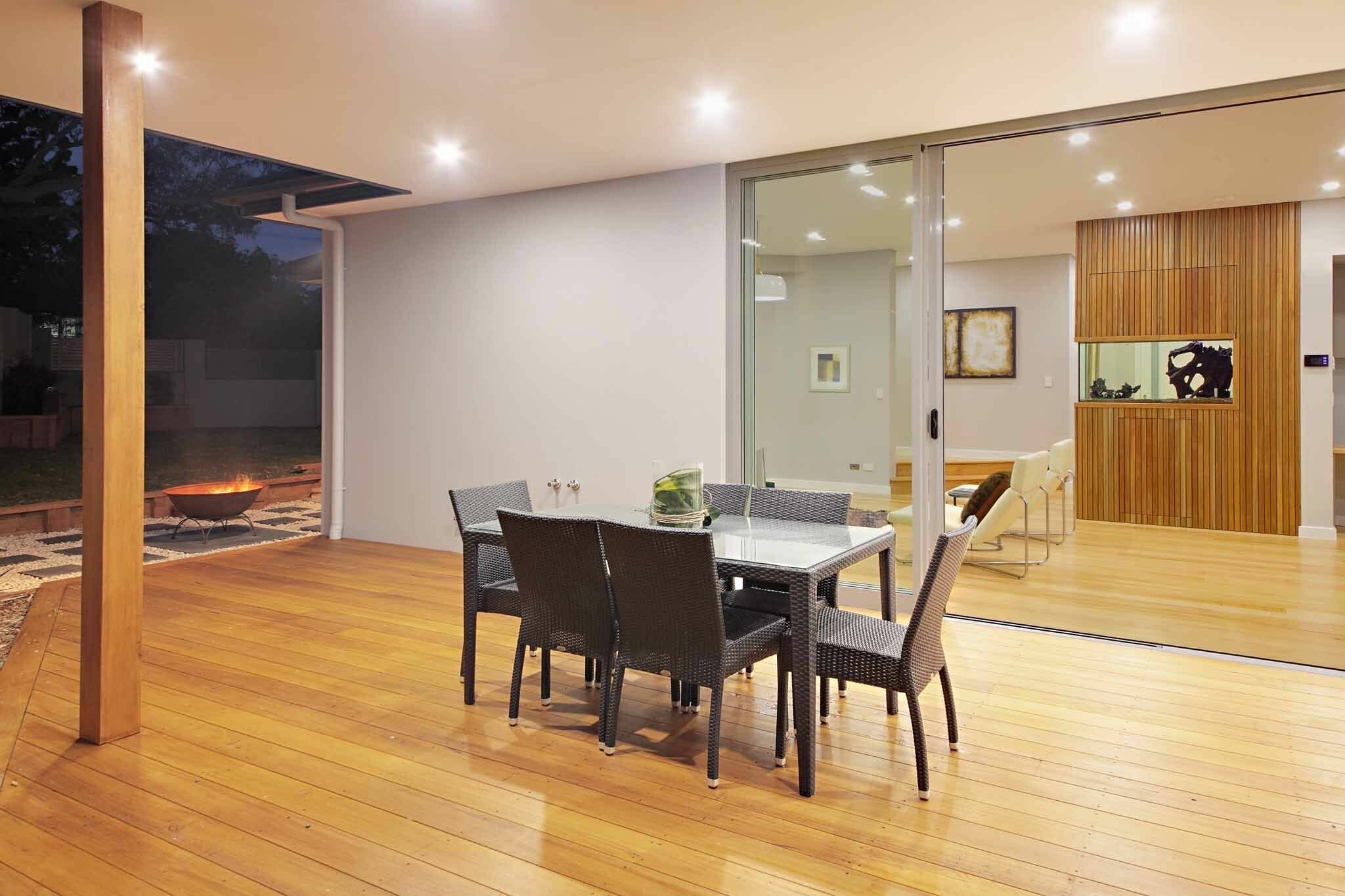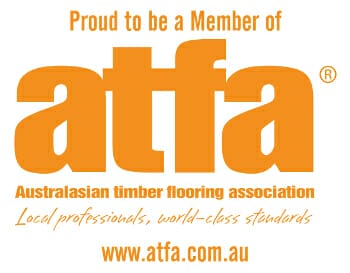TIMBER
Hardwood timber flooring is a classic and timeless option that can be styled to compliment any room or decor choice.
Timber Flooring Services
Timber flooring is a living product. It is a natural and renewable flooring solution. It holds unique character in each board and a solid timber floor can be re-sanded and revived many times. The look of a natural timber floor can be varied simply by the type of clear varnish you choose to finish with or you can go the a step further and stain the timber to bring a richer warmer feel to any room. For that breezy beach house feeling, lime washing and bleaching brings light and can give the area an appearance of increased size also. A timber floor is a healthy choice as it is low allergenic, easy to clean and hardwearing.
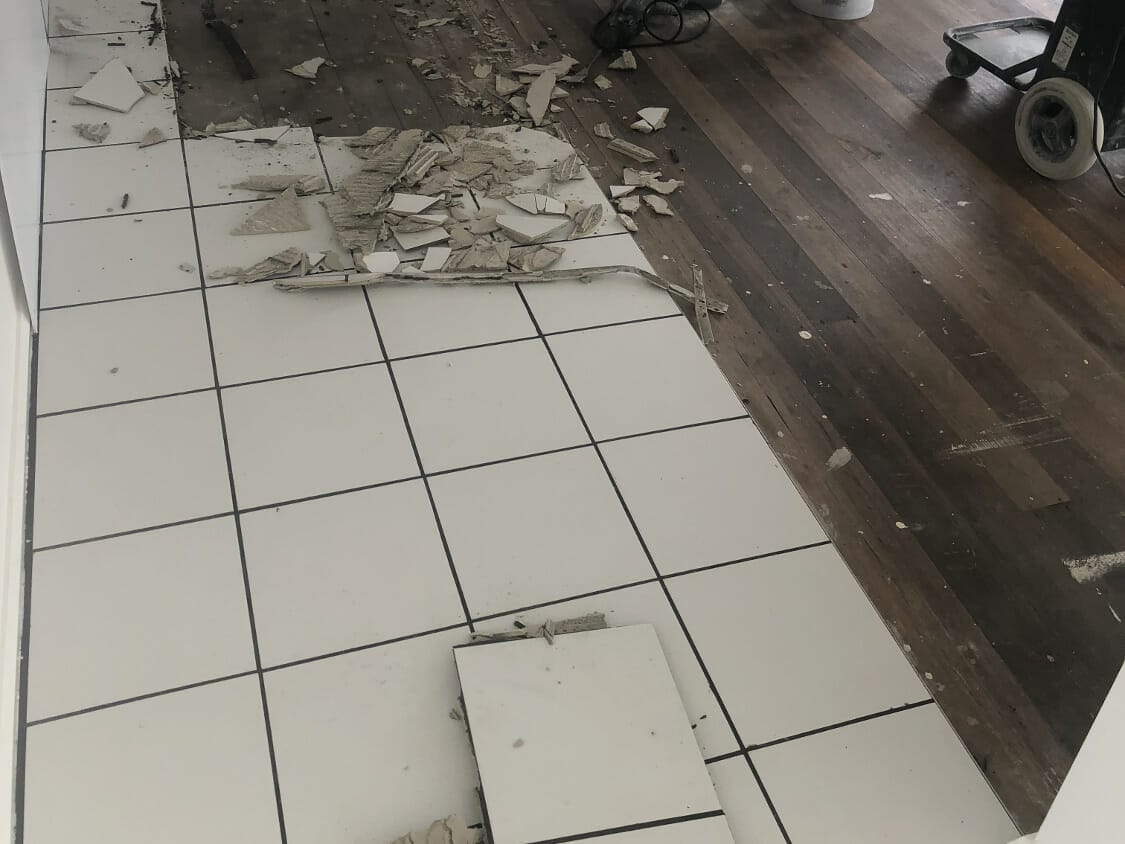
Floor Preparation
Every project is different and we are able to offer a variety of services to help see the project through. Whether there is an existing floor that needs to be removed, repaired or disposed of, we can include this cost in our comprehensive quote. We are experienced and skilled in removing all floor coverings such as carpet, lino, tiles or timber flooring.
We can offer seamless repairing to areas where walls have been removed, fireplaces and areas that have been effected by hidden water leakage. As a qualified carpenter, Joe can repair, level or replace timber floor battens and joists. Also available is preparation of subfloor particle board, level sanding, concrete slab level grinding and much more.

Floor installation
Whether you choose a hardwood floor or a prefinished laminate option, depending on individual differences, timber flooring can be laid over joists, battens, concrete slabs or even an existing timber floor.
Timber flooring is a natural living product. It will shrink and expand depending on the level of moisture in the vicinity of which it is situated. It is always good practice to check the moisture level before commencing, allowing for adequate ventilation and time for the timber to acclimitise before it is laid in place. Additional to acclimitisation, we only use elastic adhesives and expansion joints are left periodically to allow for the natural movement the floor will incur.
There are a few options as to how a hardwood floor is secured, depending on its size. Up to 85mm wide the boards can be secret nailed ie cant be seen. Up to 135mm, they can be secret nailed and top nailed and over 135mm they will need to be secret nailed, counter sunk and plugged.
Additional to the flooring itself we can apply your skirting boards or beading, if required.
While we do not directly supply timber flooring, we understand that choosing the right type of timber for your project can be a daunting task. That’s why we work closely with reputable local and interstate timber yards to provide you with expert advice and guidance. Our team is equipped to help you select the most suitable timber, considering factors such as board sizes, allowances for offcuts, and durability requirements. Our goal is to ensure a seamless process and a successful outcome for your project.
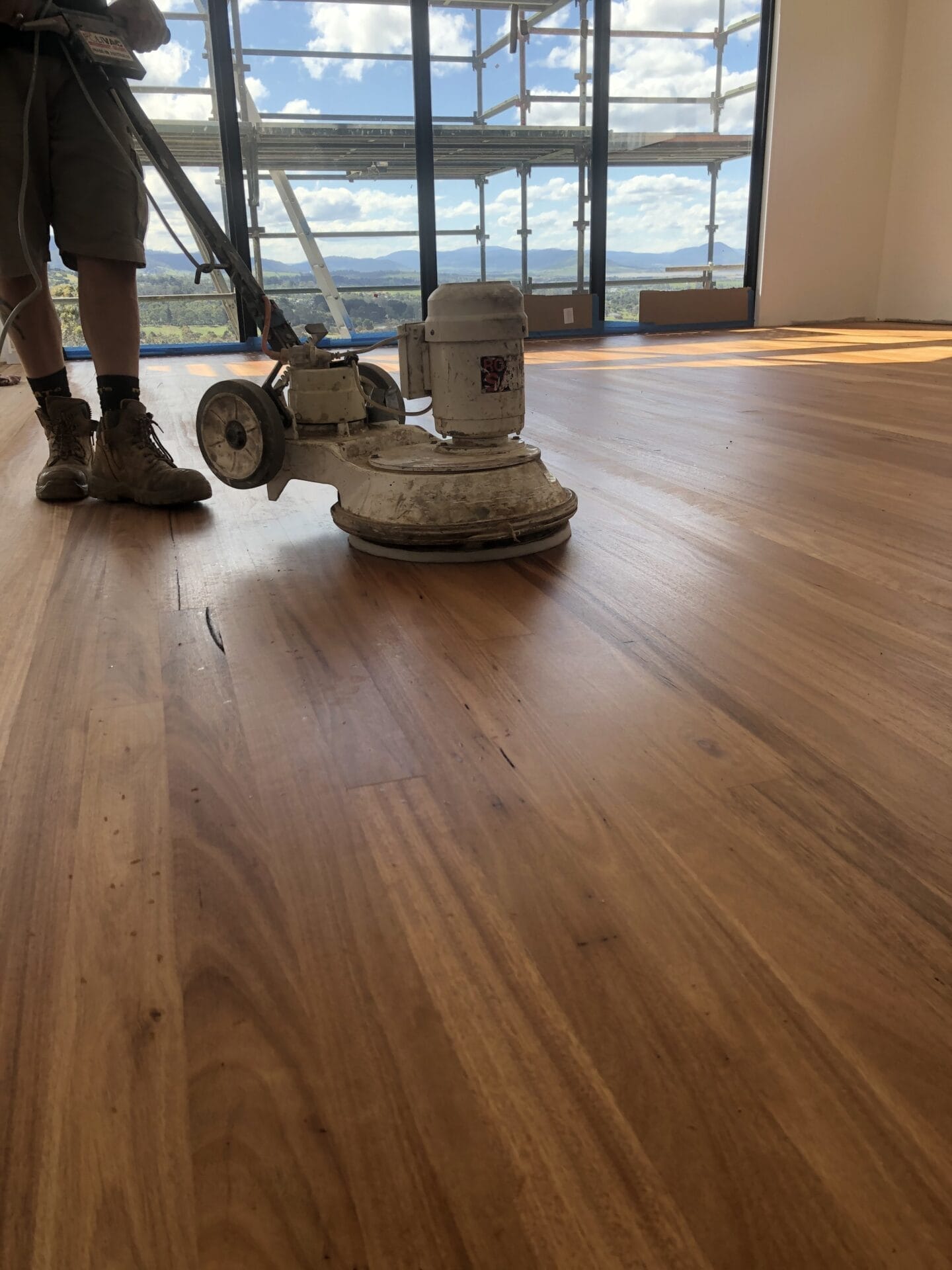
Floor sanding and polishing
A hardwood timber floor can be sanded many times. From its first sand as a new floor to a freshen-up down the track. The sanding process varies due to each individual floor’s needs and desired outcome, however, the principles are always the same.
The process usually involves 4-6 step levels and will be tailored to the floor’s condition, level of hardness or the type of varnish that has been selected to finish the floor.
Although all care and experience are used to make every floor look its best, some factors will affect the overall finish. Factors such as the age of the timber, the older a timber the darker it will become. The direction the room is facing on a property and how much direct natural light and heat it gets. Through to factors such as deep scratches, animal stains and previous flooring residue. We will advise on any areas of concern and keep the communication open during the sanding process should we see any areas that may still be visible after sanding.
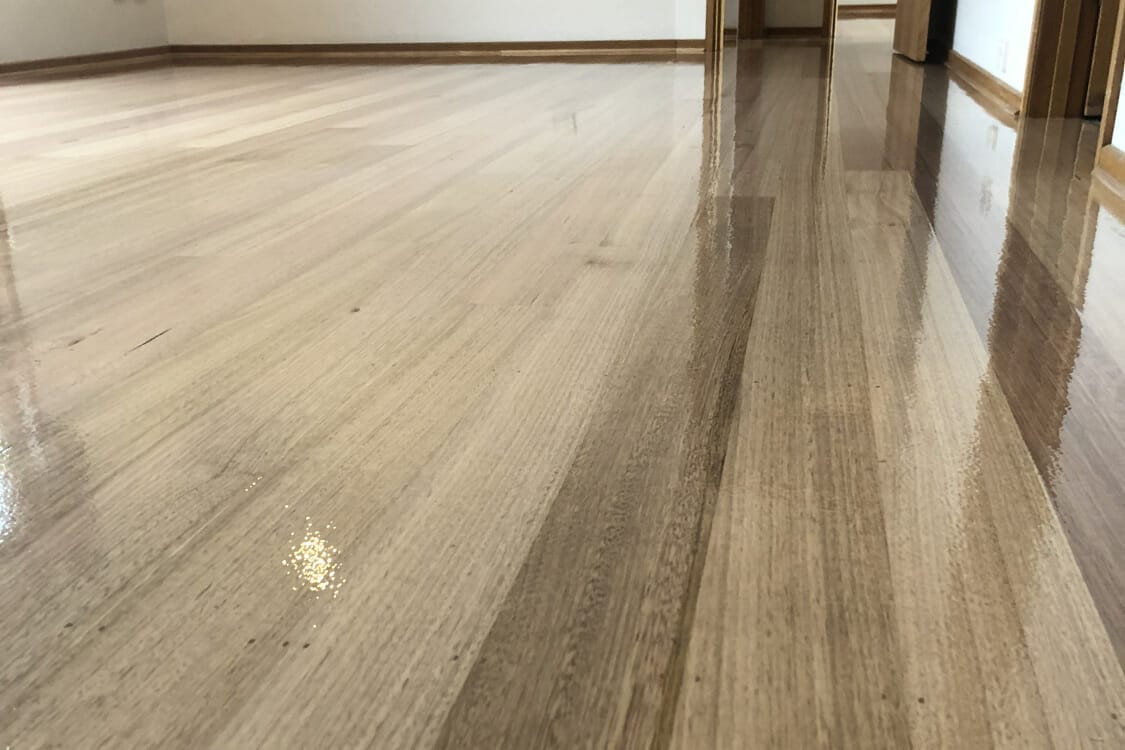
Finishing options
The type of varnish you choose to finish your floor with will depend on a few important aspects including your individual needs and preferences, along with the type of timber and its specific characteristics. Each finishing type has its own benefits and limitations. However, all products carry the same purpose, to protect the longevity of the timber floor.
The Volatile Organic Compound (VOC) is found in a large group of chemicals and is something we are all very aware of these days. Each unique product varies in its levels of VOCs. Therefore, we are more than happy to advise and educate you on each product and its attributes but understand each client needs to make their own personal decision.
The type of finish that is selected will affect the process in which the floor is sanded and prepared so, therefore, needs to be selected prior to the project’s commencement.
Along with the type of ingredient used to create the finish, there are 3 main shine levels available, matt or low sheen, satin and gloss.
The 4 main types of finishes available include:
Water based coating
This water based option offers a light, clear and impressive finish which doesn’t yellow over time. It offers excellent durability and has the lowest VOC level of the finish options therefore is reasonably priced based on these positive attributes. Available in matt, satin and gloss finishes.
Oil based coatings
Penetrating oils – this is one of the oldest methods of finishing timber floors. Penetrating oils absorbs into the timber and bring out the rich timber colours without the obvious top coat appearance. It leaves a smooth finish and has great wear resistance. If scratched, it is the easiest to fix as it is spot repairable. Penetrating oils are only available in a matt level finish.
Modified oils – this is a durable option and gives a deep classic finish commonly seen on sports and dance floors. Modified oils are also known as moisture cured urethanes and is made up of a combination of oil and urethane ingredients. Some products have high VOC levels therefore we require a well ventilated area for application. Available in matt, satin and gloss finishes.
Tung oils – this was a very popular option recommended by architects and designers over the years however it is not commonly used today due to the limited durability and need for regular maintenance. More commonly used replacement is penetrating oil or modified oil.
Polyurethane based coating
Poly is one of the most durable and hard wearing of today’s finishing options. It does leave an obvious varnish finish that’s sits on top of the floor and will darken the floor slightly and can yellow with age. This option also doesn’t offer great protection when in contact with direct sun light over a prolonged period. Often a popular recommendation as it is easy to use and the most cost effective but does has a high VOC level therefore a well-ventilated area is required for application. This product is available in 5 shine options.
Acid or Alcohol based coating
This choice of product offers a very smooth finish and doesn’t darken the timber colour like oil based products. The strength and durability of this product is generally good however the VOC levels can be extremely high therefore we very rarely choose to work with this level of toxicity however if this is your preferred finish, we are open to discussing your interest in this product and will advise accordingly. It is available in matt, satin and gloss finishes.

Staining
Staining is a process that allows you to darken the colour of your timber floor. From Chocolate Brown, Walnut Brown to Black. The possibilities are endless as straight colours can be used to mix a unique colour that suits your style and vision.
Although staining is often a choice, it can sometimes be necessary after previously carpeted or tiled floors are exposed and water damage or pet stains have been hidden beneath. Staining is often a cost effective way of blending darker areas through than replacing the floor or trying to cover damaged areas with rugs.
Age and hardness of the timber can affect the overall result of staining. Harder areas will absorb less stain where softer areas will take more. This can even happen within the same board. This allows your floor to keep the its individuality and to be considered before going ahead.
Stain is extremely thin in consistency and is applied with care and experience. We will always sample a section of the floor with you to make sure you are happy with the shade, bearing in mind the varnish that will be applied to finish will change the looks ever so slightly.
Lime Washing
Lime washing is a process that gives the timber a soft to bright milky appearance whilst keeping the characteristics and detail of the wood grain, which is often associated with a beach house feel. Lime washing is not suitable for all timber types as many Australian hardwoods have their own natural oils that inhibit the process, but we can achieve a great result on Tasmanian Oak.
Lime wash can be done using a water based or oil based product and is finished with a clear topical varnish to seal.
Bleaching
As previously mentioned, lime washing is not suitable on many Australian timbers, so the process of bleaching/acid washing is another option to lighten the look of your floor. It is also another way of treating water or pet stained floors, if you don’t want to darken the overall look of your floor.
The process is a two-step system and is based on the use of hydrogen peroxide. The application is only possible in a well ventilated environment. The timber is then finished with a topical varnish.
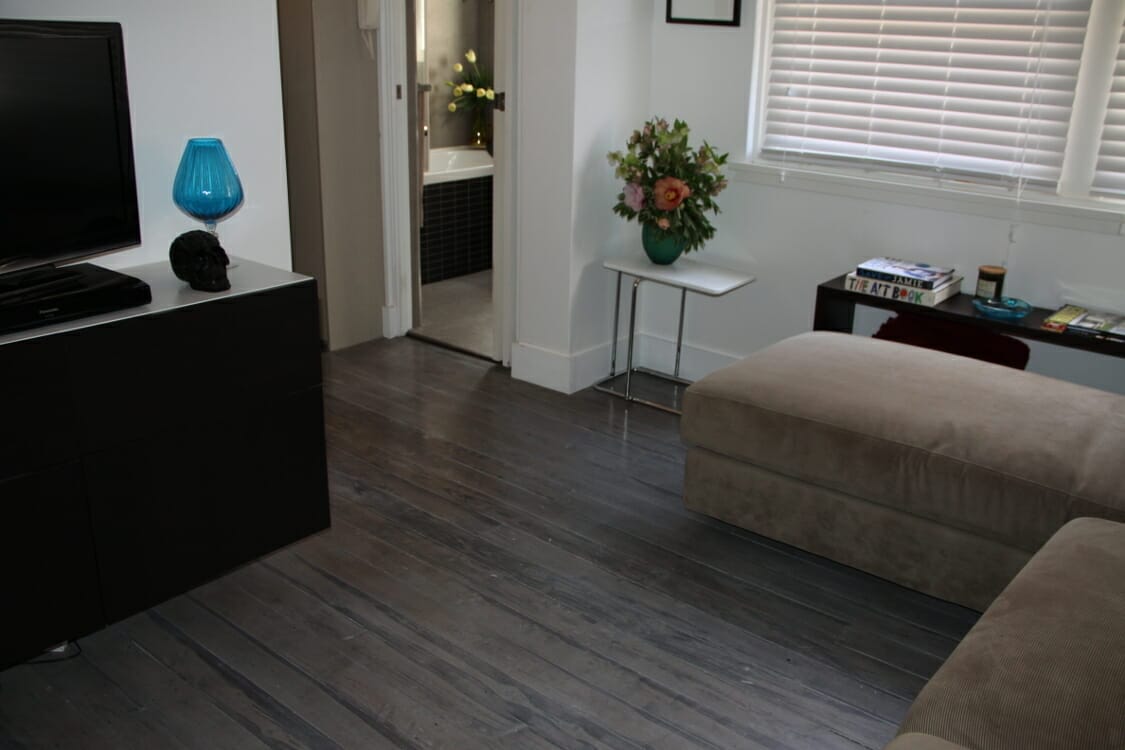
Stone Washing
We are very proud to be able to offer a unique grey washed look that involves a variety of techniques that tie in together to achieve a lime washed look with grey overtones, maintaining the characteristics of the timber but delivering a thoroughly modern look otherwise not available on hardwood floors. As with lime washing it is not suitable for all floors however it is a show stopper on Tasmanian Oak.
External Timber Decks
Like your timber floors inside, the outdoor deck has many specific elements it needs to be protected from too. From new timber to many times re-sanded decks, there is a product and a look to suit all your needs.
